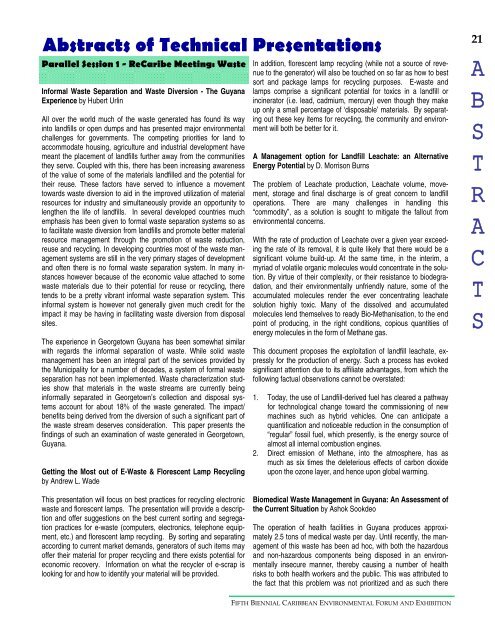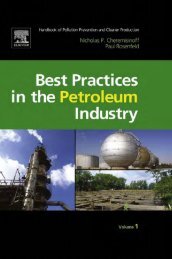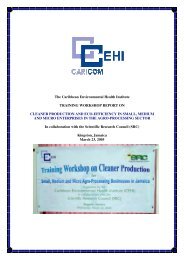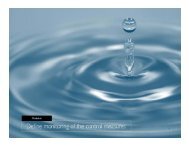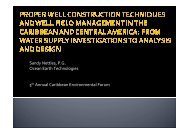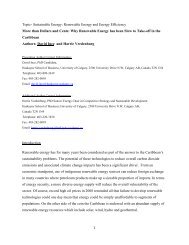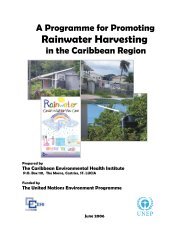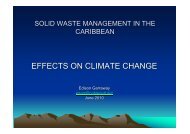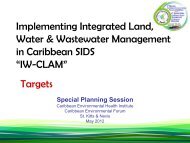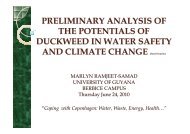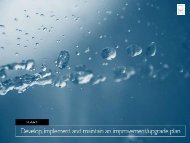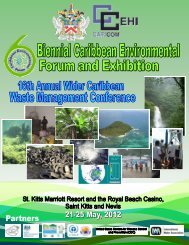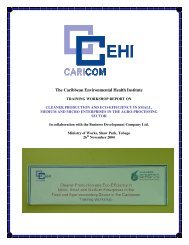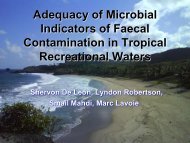conference magazine - Caribbean Environmental Health Institute
conference magazine - Caribbean Environmental Health Institute
conference magazine - Caribbean Environmental Health Institute
You also want an ePaper? Increase the reach of your titles
YUMPU automatically turns print PDFs into web optimized ePapers that Google loves.
Abstracts of Technical Presentations<br />
Parallel Session 1 - ReCaribe Meeting: Waste<br />
Informal Waste Separation and Waste Diversion - The Guyana<br />
Experience by Hubert Urlin<br />
All over the world much of the waste generated has found its way<br />
into landfills or open dumps and has presented major environmental<br />
challenges for governments. The competing priorities for land to<br />
accommodate housing, agriculture and industrial development have<br />
meant the placement of landfills further away from the communities<br />
they serve. Coupled with this, there has been increasing awareness<br />
of the value of some of the materials landfilled and the potential for<br />
their reuse. These factors have served to influence a movement<br />
towards waste diversion to aid in the improved utilization of material<br />
resources for industry and simultaneously provide an opportunity to<br />
lengthen the life of landfills. In several developed countries much<br />
emphasis has been given to formal waste separation systems so as<br />
to facilitate waste diversion from landfills and promote better material<br />
resource management through the promotion of waste reduction,<br />
reuse and recycling. In developing countries most of the waste management<br />
systems are still in the very primary stages of development<br />
and often there is no formal waste separation system. In many instances<br />
however because of the economic value attached to some<br />
waste materials due to their potential for reuse or recycling, there<br />
tends to be a pretty vibrant informal waste separation system. This<br />
informal system is however not generally given much credit for the<br />
impact it may be having in facilitating waste diversion from disposal<br />
sites.<br />
The experience in Georgetown Guyana has been somewhat similar<br />
with regards the informal separation of waste. While solid waste<br />
management has been an integral part of the services provided by<br />
the Municipality for a number of decades, a system of formal waste<br />
separation has not been implemented. Waste characterization studies<br />
show that materials in the waste streams are currently being<br />
informally separated in Georgetown’s collection and disposal systems<br />
account for about 18% of the waste generated. The impact/<br />
benefits being derived from the diversion of such a significant part of<br />
the waste stream deserves consideration. This paper presents the<br />
findings of such an examination of waste generated in Georgetown,<br />
Guyana.<br />
Getting the Most out of E-Waste & Florescent Lamp Recycling<br />
by Andrew L. Wade<br />
In addition, florescent lamp recycling (while not a source of revenue<br />
to the generator) will also be touched on so far as how to best<br />
sort and package lamps for recycling purposes. E-waste and<br />
lamps comprise a significant potential for toxics in a landfill or<br />
incinerator (i.e. lead, cadmium, mercury) even though they make<br />
up only a small percentage of ‘disposable’ materials. By separating<br />
out these key items for recycling, the community and environment<br />
will both be better for it.<br />
A Management option for Landfill Leachate: an Alternative<br />
Energy Potential by D. Morrison Burns<br />
The problem of Leachate production, Leachate volume, movement,<br />
storage and final discharge is of great concern to landfill<br />
operations. There are many challenges in handling this<br />
“commodity”, as a solution is sought to mitigate the fallout from<br />
environmental concerns.<br />
With the rate of production of Leachate over a given year exceeding<br />
the rate of its removal, it is quite likely that there would be a<br />
significant volume build-up. At the same time, in the interim, a<br />
myriad of volatile organic molecules would concentrate in the solution.<br />
By virtue of their complexity, or their resistance to biodegradation,<br />
and their environmentally unfriendly nature, some of the<br />
accumulated molecules render the ever concentrating leachate<br />
solution highly toxic. Many of the dissolved and accumulated<br />
molecules lend themselves to ready Bio-Methanisation, to the end<br />
point of producing, in the right conditions, copious quantities of<br />
energy molecules in the form of Methane gas.<br />
This document proposes the exploitation of landfill leachate, expressly<br />
for the production of energy. Such a process has evoked<br />
significant attention due to its affiliate advantages, from which the<br />
following factual observations cannot be overstated:<br />
1. Today, the use of Landfill-derived fuel has cleared a pathway<br />
for technological change toward the commissioning of new<br />
machines such as hybrid vehicles. One can anticipate a<br />
quantification and noticeable reduction in the consumption of<br />
“regular” fossil fuel, which presently, is the energy source of<br />
almost all internal combustion engines.<br />
2. Direct emission of Methane, into the atmosphere, has as<br />
much as six times the deleterious effects of carbon dioxide<br />
upon the ozone layer, and hence upon global warming.<br />
21<br />
A<br />
B<br />
S<br />
T<br />
R<br />
A<br />
C<br />
T<br />
S<br />
This presentation will focus on best practices for recycling electronic<br />
waste and florescent lamps. The presentation will provide a description<br />
and offer suggestions on the best current sorting and segregation<br />
practices for e-waste (computers, electronics, telephone equipment,<br />
etc.) and florescent lamp recycling. By sorting and separating<br />
according to current market demands, generators of such items may<br />
offer their material for proper recycling and there exists potential for<br />
economic recovery. Information on what the recycler of e-scrap is<br />
looking for and how to identify your material will be provided.<br />
Biomedical Waste Management in Guyana: An Assessment of<br />
the Current Situation by Ashok Sookdeo<br />
The operation of health facilities in Guyana produces approximately<br />
2.5 tons of medical waste per day. Until recently, the management<br />
of this waste has been ad hoc, with both the hazardous<br />
and non-hazardous components being disposed in an environmentally<br />
insecure manner, thereby causing a number of health<br />
risks to both health workers and the public. This was attributed to<br />
the fact that this problem was not prioritized and as such there<br />
FIFTH BIENNIAL CARIBBEAN ENVIRONMENTAL FORUM AND EXHIBITION


